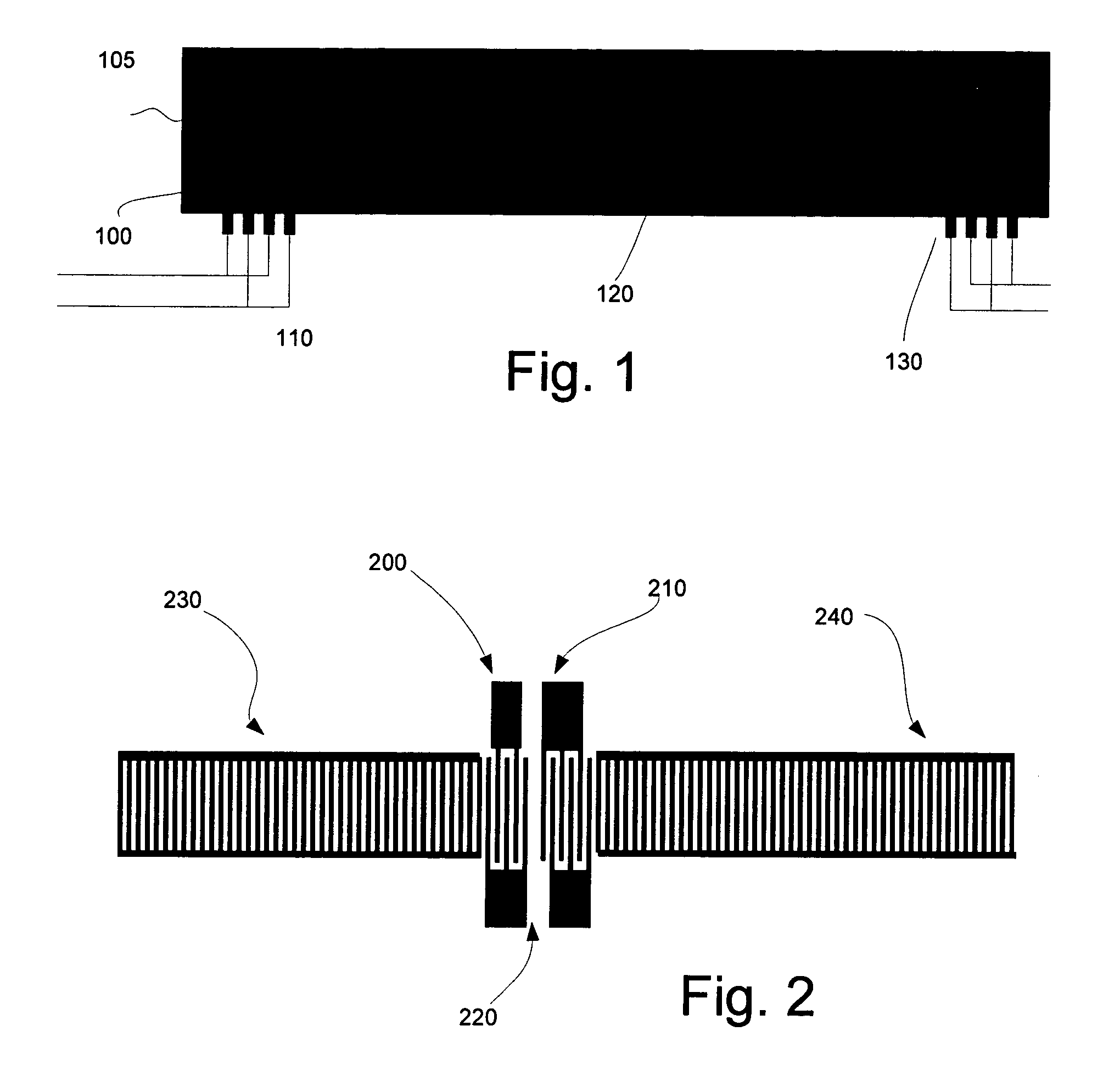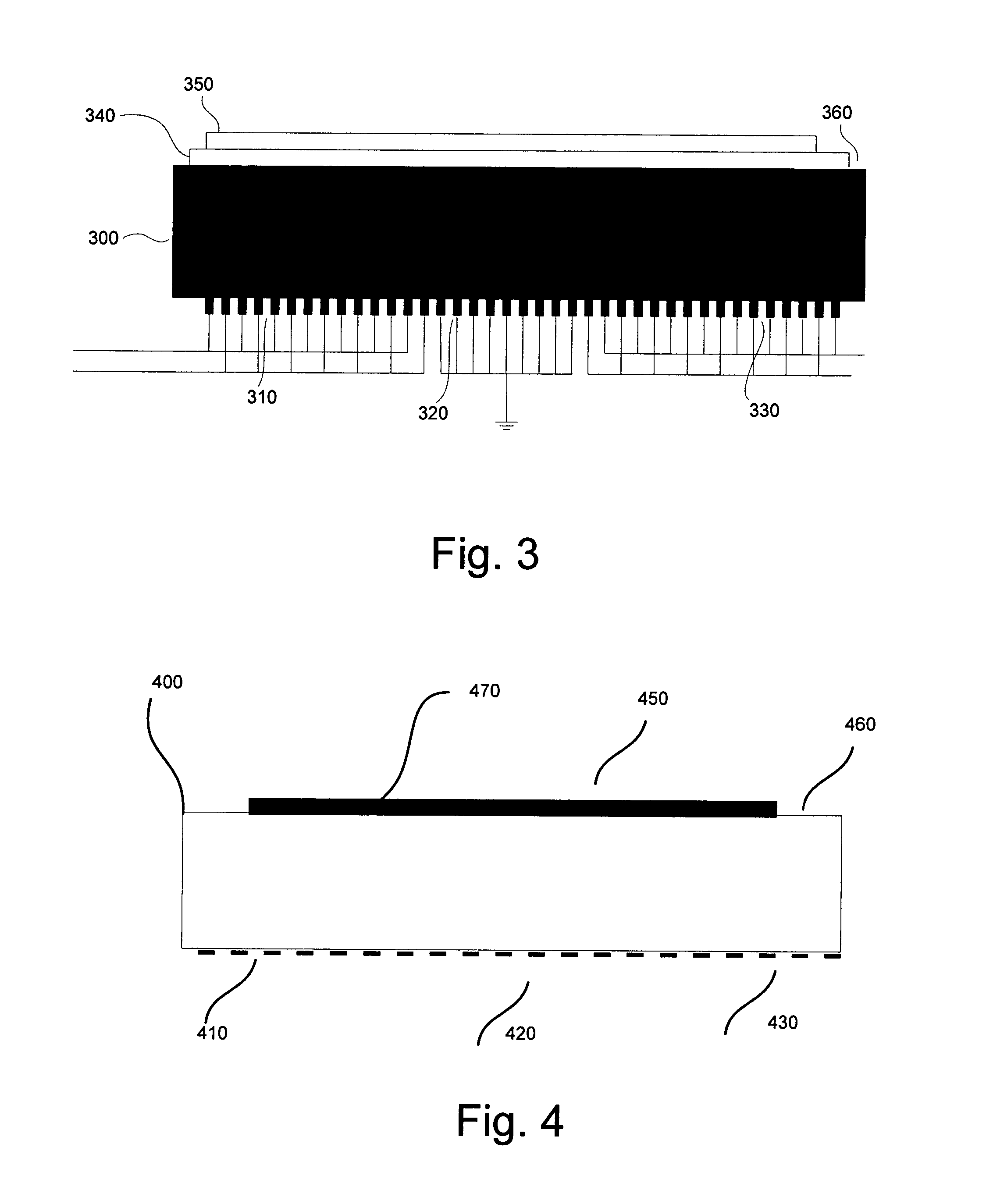Multi-reflective acoustic wave device
- Summary
- Abstract
- Description
- Claims
- Application Information
AI Technical Summary
Benefits of technology
Problems solved by technology
Method used
Image
Examples
Embodiment Construction
Reference is now made to FIG. 3 to provide a description of the preferred embodiment of the present invention, which comprises a structure having a substrate 035 which may be constructed of several layers, or be made of uniform material. At least one layer of the substrate, or all of it, is made of piezoelectric substance having essentially uniform thickness. The piezoelectric substance has at least one substantially flat surface, constructed to guide an acoustic wave. The preferred flat surface is one polished to a flatness having variations that are insignificant compared to the intended wavelength.
A large reflective grating (310, 320 and 330) is deposited on the flat surface. It is substantially periodic within a certain tolerance of the intended wavelength, so that it will continue propogation of an acoustic wave while remaining synchronous with the wave. While the reflective grating is essentially periodic and preferably coherent, it may contain areas without gratings, or ot...
PUM
 Login to View More
Login to View More Abstract
Description
Claims
Application Information
 Login to View More
Login to View More - R&D Engineer
- R&D Manager
- IP Professional
- Industry Leading Data Capabilities
- Powerful AI technology
- Patent DNA Extraction
Browse by: Latest US Patents, China's latest patents, Technical Efficacy Thesaurus, Application Domain, Technology Topic, Popular Technical Reports.
© 2024 PatSnap. All rights reserved.Legal|Privacy policy|Modern Slavery Act Transparency Statement|Sitemap|About US| Contact US: help@patsnap.com










